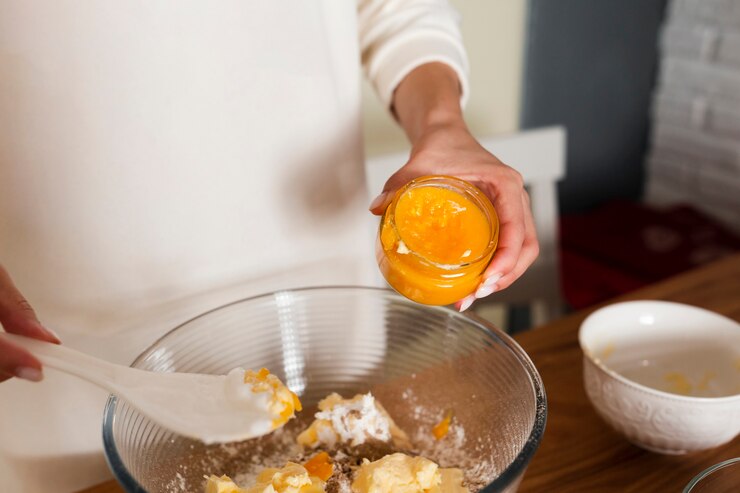Introduction to Bourbon Mash Recipe In 2024
Creating your own Bourbon Mash Recipe In 2024 is a rewarding and enjoyable process. Whether you’re a beginner or an experienced distiller, understanding the steps and ingredients is crucial for success. This guide will take you through the entire process, from selecting the right grains to aging and bottling your bourbon. Dive in to discover how to craft a perfect bourbon mash and enjoy the unique flavors of your homemade whiskey.

Understanding Bourbon Mash Recipe In 2024
Crafting a perfect bourbon mash starts with understanding the essential components and equipment needed. This section will provide detailed information on the key ingredients and the brewing equipment required to ensure a smooth and successful process.
Table of Contents
Ingredients Needed for Bourbon Mash
To make a traditional bourbon mash, you need a specific combination of grains, water, and yeast. Here’s a detailed look at each ingredient:
- Corn
- Role: The primary grain in bourbon, making up at least 51% of the mash bill.
- Flavor Contribution: Adds sweetness and body to the bourbon.
- Rye or Wheat
- Role: Secondary grains used to balance the flavor profile.
- Flavor Contribution: Rye adds a spicy, robust character, while wheat offers a softer, smoother taste.
- Barley
- Role: Used in smaller quantities for its enzymatic properties.
- Flavor Contribution: Provides maltiness and aids in the conversion of starches to fermentable sugars.
- Water
- Role: Essential for mashing, fermentation, and dilution.
- Quality: Use clean, filtered water to avoid any impurities that could affect the flavor.
- Yeast
- Role: Converts sugars into alcohol during fermentation.
- Types: Different yeast strains can influence the flavor and aroma of the final product.

Brewing Equipment Required
Having the right equipment is crucial for making bourbon mash. Here’s a list of essential tools:
- Grain Mill
- Purpose: To crush the grains and expose the starches inside.
- Types: Manual or electric mills, depending on your batch size and preference.
- Mash Tun
- Purpose: A container where the mash is mixed and heated.
- Features: Should be able to maintain a stable temperature and have a false bottom or strainer for separating solids.
- Fermentation Vessel
- Purpose: A container where the mash ferments.
- Options: Food-grade plastic buckets, glass carboys, or stainless steel fermenters.
- Thermometer
- Purpose: To monitor the temperature of the mash.
- Accuracy: A digital thermometer with a probe is ideal for precise readings.
- Hydrometer
- Purpose: To measure the specific gravity of the mash.
- Usage: Helps determine the sugar content before and after fermentation.
- pH Meter or Strips
- Purpose: To measure and adjust the pH levels of the mash.
- Importance: Maintaining the correct pH is crucial for enzyme activity and yeast health.
- Stirring Paddle
- Purpose: To mix the mash thoroughly.
- Material: Food-grade plastic or stainless steel to avoid contamination.
- Heat Source
- Purpose: To cook the mash.
- Options: Propane burners, electric heaters, or stovetops, depending on your setup.
Understanding the ingredients and equipment needed for bourbon mash is the foundation for crafting a high-quality bourbon. With these essentials in place, you’re ready to move on to the detailed steps of making your own bourbon mash.
Step-by-Step Guide to Making Bourbon Mash
Crafting a bourbon mash involves a series of precise steps. Each stage is crucial for developing the desired flavors and characteristics of your bourbon. Follow this detailed guide to ensure success.
Step 1: Milling the Bourbon Grain
Purpose: Milling breaks down the grain to expose the starches, making them accessible during the mashing process.
- Process: Use a grain mill to crush the grains. Aim for a coarse grind to ensure proper water penetration and enzyme activity during mashing.
- Tip: Avoid over-grinding as it can lead to a thick mash that’s difficult to handle.

Step 2: Preparing the Mash
This step involves cooking the grains and converting the starches into fermentable sugars. It’s a critical part of the bourbon-making process.
Mash Temperature
- Goal: Achieve the right temperature to activate enzymes for starch conversion.
- Procedure: Heat water in your mash tun to around 165°F (74°C). Add the milled corn first, as it requires the highest temperature for gelatinization.
- Monitoring: Maintain the temperature consistently to ensure effective starch conversion.
Mash Agitation
- Purpose: Ensures even heat distribution and prevents clumping.
- Method: Stir the mash continuously during the initial heating phase and periodically afterward.
- Equipment: Use a long-handled stirring paddle for thorough mixing.
Measuring and Adjusting Mash pH
- Importance: Proper pH levels optimize enzyme activity.
- Ideal Range: The mash pH should be between 5.2 and 5.6.
- Adjustment: Use a pH meter or strips to measure. Adjust with food-grade acids or bases as needed.
Starch Conversion Test
- Purpose: Confirm that starches have converted into sugars.
- Test: Use an iodine test. Add a few drops of iodine to a small mash sample. If it turns blue-black, starch is still present; if it stays brown or yellow, conversion is complete.
Mash-out Process
- Objective: Halt enzyme activity and make the mash easier to handle.
- Procedure: Raise the mash temperature to around 170°F (77°C) and hold for 10 minutes.
Pulling the Grains
- Purpose: Separate the liquid wort from the grain solids.
- Method: Use a false bottom or strainer in your mash tun. Allow the liquid to drain, then sparge with hot water to extract any remaining sugars.
Step 3: Transferring to Fermenter
Once the mash is prepared, it’s time to move it to the fermentation vessel.
- Cooling: Allow the wort to cool to fermentation temperature, typically around 70-75°F (21-24°C).
- Transfer: Pour or siphon the cooled wort into a sanitized fermenter. Avoid splashing to minimize oxygen exposure.
Step 4: Adding Yeast and Nutrients
Yeast is essential for converting sugars into alcohol during fermentation.
Aeration
- Purpose: Provide oxygen for yeast health.
- Method: Stir the wort vigorously or use an aeration pump.
Pitching Yeast
- Type: Choose a yeast strain suited for bourbon, such as distiller’s yeast.
- Procedure: Rehydrate dry yeast according to package instructions or pitch liquid yeast directly.
Monitoring Fermentation
- Duration: Fermentation typically lasts 3-7 days, depending on temperature and yeast strain.
- Indicators: Look for signs of activity such as bubbling in the airlock or krausen (foam) on top of the wort.
- Completion: Use a hydrometer to check the specific gravity. Fermentation is complete when gravity readings are stable over several days.
By following these steps, you’ll ensure that your bourbon mash is prepared correctly, setting the stage for successful fermentation and distillation.
Serving Suggestion:
Pair your favorite lean protein, such as grilled chicken breast or baked fish, with a generous serving of mixed greens and colorful vegetables. Consider incorporating whole grains like quinoa or brown rice for added fiber and nutrients. Dress your salad with a light vinaigrette or a squeeze of fresh lemon juice for a refreshing flavor boost. This balanced meal provides essential nutrients while supporting your weight loss goals, making it a satisfying and healthful choice for any mealtime.

FAQ:
1. What is the Collierville weight loss program?
The Collierville weight loss program refers to a structured approach to achieving weight loss goals in the Collierville area. It typically involves a combination of personalized diet plans, exercise routines, and possibly additional support services such as counseling or group sessions. The program aims to help individuals achieve sustainable weight loss through tailored strategies and community support.
2. How effective is the Collierville weight loss program?
The effectiveness of the Collierville weight loss program can vary based on individual factors such as adherence to the program, starting weight, metabolic rate, and overall health. Generally, programs that offer personalized plans and ongoing support tend to yield better results. It’s important to consult with program providers or reviews to gauge effectiveness and suitability for your weight loss needs.
3. What are the key components of the Collierville weight loss program?
Key components of the Collierville weight loss program may include:
- Personalized Diet Plans: Tailored nutrition guidelines based on individual health and weight loss goals.
- Exercise Regimens: Structured workout plans to promote calorie burning and improve fitness.
- Behavioral Support: Strategies to address emotional eating, stress management, and habit formation.
- Community and Support: Group sessions, online forums, or counseling to foster motivation and accountability.
4. How can I enroll in the Collierville weight loss program?
To enroll in the Collierville weight loss program, follow these steps:
- Research Programs: Explore available programs in Collierville through online research, referrals, or local health providers.
- Consultation: Schedule a consultation with program providers to discuss your weight loss goals, program details, and any specific needs or concerns.
- Enrollment: Complete necessary paperwork, payment arrangements, and agree to program terms and conditions.
- Start Program: Begin following the personalized plan outlined by program providers, incorporating diet, exercise, and support components.
5. Is the Collierville weight loss program suitable for everyone?
The suitability of the Collierville weight loss program depends on individual health, goals, and preferences:
- Health Assessment: Programs may require a health assessment to determine suitability, especially for individuals with medical conditions or special dietary needs.
- Personal Goals: Assess whether the program aligns with your weight loss goals, lifestyle, and willingness to commit to the recommended changes.
- Consultation: Seek advice from healthcare providers or program facilitators to ensure the program meets your needs and expectations.
Conclusion:
In conclusion, the Collierville weight loss program offers a structured and personalized approach to achieving sustainable weight loss goals within the Collierville community. By focusing on customized diet plans, effective exercise routines, behavioral support, and community engagement, this program aims to empower individuals to make lasting lifestyle changes. Whether seeking to shed excess pounds, improve overall health, or enhance fitness levels, participants benefit from comprehensive guidance and a supportive environment. With commitment and adherence to the program’s principles, individuals can embark on a journey towards healthier living, equipped with the tools and encouragement needed to succeed in their weight loss endeavors.